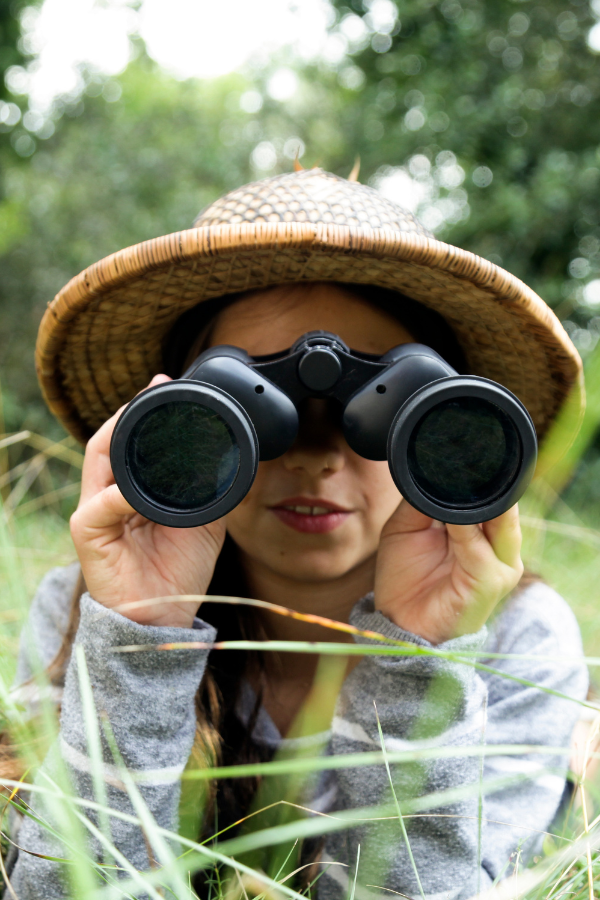How to Keep Your Child Safe
Ensuring the safety of our children involves understanding essential kids safety tips. From teaching clear rules for being home alone to practicing fire safety and internet safety, here are the top 10 kids safety tips every parent should know.

This article contains affiliate links, which means I may receive a small commission at no cost to you if you make a purchase through a link. This helps support my blog and allows me to continue to provide you with free content. I only recommend products and services that I genuinely believe in and trust. Thank you for your support!
1. Teach Them to “Stay Where YOU Can See ME”
One of the most effective kids safety tips is teaching children to “stay where YOU can see ME” instead of the traditional “stay where I can see you.” This simple switch helps children understand to stay within sight at all times, especially in potentially dangerous areas like driveways or crowded parks/beaches.

2. Establish Clear Rules for Being Home Alone
When your child is old enough to stay home alone, ensure they know the essential kids safety tips. Teach them how to lock doors and windows, what to do if someone knocks, and how to use the phone in an emergency. Having emergency contacts readily available is crucial.

3. Practice Fire Safety
Fire safety is paramount. Teach your children to crawl under smoke, use emergency exits, and call 911 after escaping a fire. Conduct regular fire drills at home and ensure they know where fire extinguishers are located and how to use them.

4. Stranger Danger Awareness
Educate your kids about the dangers of interacting with strangers and the importance of staying close to trusted adults in public places. Role-play scenarios to teach them how to respond if approached by a stranger, emphasizing never accepting gifts or rides.

5. Internet Safety
In the digital age, kids safety tips include setting clear rules for internet use. Specify which websites they can visit and educate them about online dangers like interacting with strangers. Regularly monitor their online activities to ensure compliance with safety guidelines.

6. Safe Outdoor Play
Encourage safe outdoor play by teaching kids safety tips such as staying away from traffic and using crosswalks when riding bikes or scooters. Supervise outdoor activities to ensure adherence to safety rules, promoting helmet use and proper road safety habits.

7. Water Safety
Whether in a pool or natural body of water, kids safety tips for water include constant supervision and teaching basic swimming skills. Emphasize the importance of swimming in designated areas and wearing life jackets while boating to prevent accidents.

8. First Aid Knowledge
Equip your children with basic first aid knowledge, teaching them to clean and bandage cuts and recognize signs of more serious injuries. Ensure they know how to call for help and keep a first aid kit accessible in the home.

9. Safe Sleep Practices
For younger children, promote safe sleep practices such as placing infants on their backs in cribs free of blankets, pillows, and toys to reduce the risk of Sudden Infant Death Syndrome (SIDS). Older children should maintain regular sleep schedules for overall health and safety.

10. Emergency Preparedness
Prepare your children for emergencies by discussing different scenarios like natural disasters. Create a family emergency plan with meeting places and contact information, practicing it regularly. Ensure they know how to call 911 and provide necessary information to emergency responders.

Implementing Kids Safety Tips in Daily Life
Incorporating these kids safety tips into your daily routine is crucial for your child’s well-being and your peace of mind. Regularly review these guidelines with your children as they grow older and more independent. Consistent communication and reinforcement are key to ensuring their understanding and compliance.
Additional Tips for Parents
In addition to the top 10 kids safety tips, here are extra pointers to enhance safety:
- Lead by Example: Demonstrate safe behaviors to your children, from wearing seatbelts to following internet safety rules.
- Stay Informed: Keep up with the latest safety recommendations from trusted sources like the American Academy of Pediatrics (AAP) and the Centers for Disease Control and Prevention (CDC).
- Encourage Communication: Foster open dialogue with your children about safety concerns, ensuring they feel comfortable discussing any issues.
- Create a Safe Environment: Regularly assess your home for potential hazards and make necessary adjustments. Ensure safety devices like smoke detectors and security systems are functional.
By incorporating these kids safety tips and maintaining a proactive approach to safety, you can help create a secure environment where your children can thrive. Your vigilance and guidance are essential for their safety and well-being.
